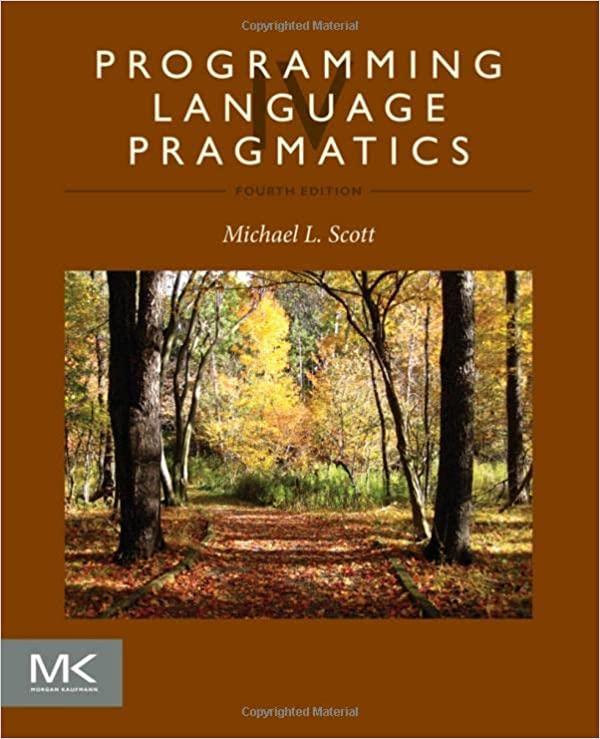Consider the problem of determining whether two trees have the same fringe: the same set of leaves
Question:
Consider the problem of determining whether two trees have the same fringe: the same set of leaves in the same order, regardless of internal structure. An obvious way to solve this problem is to write a function flatten that takes a tree as argument and returns an ordered list of its leaves. Then we can say
(define same-fringe
(lambda (T1 T2)
(equal (flatten T1) (flatten T2))))
Write a straightforward version of flatten in Scheme. How efficient is same-fringe when the trees differ in their first few leaves? How would your answer differ in a language like Haskell, which uses lazy evaluation for all arguments? How hard is it to get Haskell’s behavior in Scheme, using delay and force?
Fantastic news! We've Found the answer you've been seeking!
Step by Step Answer:
Related Book For 

Question Posted:





